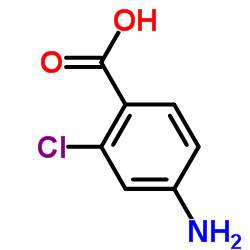Fetal acidosis, 2-chloroprocaine, and epidural anesthesia for cesarean section.
E H Philipson, B R Kuhnert, C D Syracuse
Index: Am. J. Obstet. Gynecol. 151(3) , 322-4, (1985)
Full Text: HTML
Abstract
Amide-linked local anesthetic agents, such as lidocaine and bupivacaine, can become "trapped" in their ionized forms on the fetal side of the placenta, and therefore their net transfer across the placenta is increased. An ester-linked local anesthetic agent, 2-chloroprocaine, is rapidly metabolized, and placental transfer is limited. Since the metabolism of 2-chloroprocaine by fetal plasma is slower than in maternal plasma, the potential for ion trapping exists. The purpose of this study was to determine the disposition of 2-chloroprocaine and its metabolite, chloroaminobenzoic acid, in relation to the umbilical cord vein pH at delivery, and specifically, to determine whether ion trapping exists. Epidural anesthesia with 2-chloroprocaine was administered to 44 women at term prior to cesarean section. At delivery the levels of 2-chloroprocaine and chloroaminobenzoic acid in maternal plasma and umbilical cord vein were quantitated. Neonates were divided into two groups based on the umbilical cord vein pH at delivery. Ten of the 44 patients delivered neonates with a pH less than or equal to 7.25 (acidotic group) while 34 delivered neonates with a pH greater than 7.25 (nonacidotic group). The mean umbilical cord vein pH in the acidotic and nonacidotic groups was 7.22 +/- 0.03 and 7.32 +/- 0.03, respectively (p less than 0.001). There were also no differences between the groups in maternal and neonatal clinical characteristics or in the total dose of 2-chloroprocaine administered or the drug-to-delivery interval. The pharmacologic results did not demonstrate a statistical difference in the concentration of 2-chloroprocaine or chloroaminobenzoic acid in the maternal vein or umbilical cord vein at delivery between the two groups. Thus the results of this study demonstrate that placental transfer of 2-chloroprocaine is not influenced by fetal acidosis. Therefore these data suggest that 2-chloroprocaine may be the drug of choice when fetal acidosis or distress is anticipated.
Related Compounds
| Structure | Name/CAS No. | Molecular Formula | Articles |
|---|---|---|---|
 |
2-Chloro-p-aminobenzoic acid
CAS:2457-76-3 |
C7H6ClNO2 |
|
Validation of high-performance liquid chromatographic method...
1996-06-01 [J. Pharm. Biomed. Anal. 14(8-10) , 1251-9, (1996)] |
|
Intrapartum paracervical block anesthesia with 2-chloroproca...
1983-05-01 [Am. J. Obstet. Gynecol. 146(1) , 16-22, (1983)] |
|
Comparison of lidocaine and 2-chloroprocaine in paracervical...
1983-02-01 [Anesth. Analg. 62(2) , 168-73, (1983)] |
|
Urinary metabolites of chloroprocaine studied by combined ga...
1981-04-01 [Anesthesiology 54(4) , 329-32, (1981)] |
|
Rapid determination of chloroprocaine and its major metaboli...
1996-01-26 [J. Chromatogr. B, Biomed. Appl. 675(2) , 336-41, (1996)] |